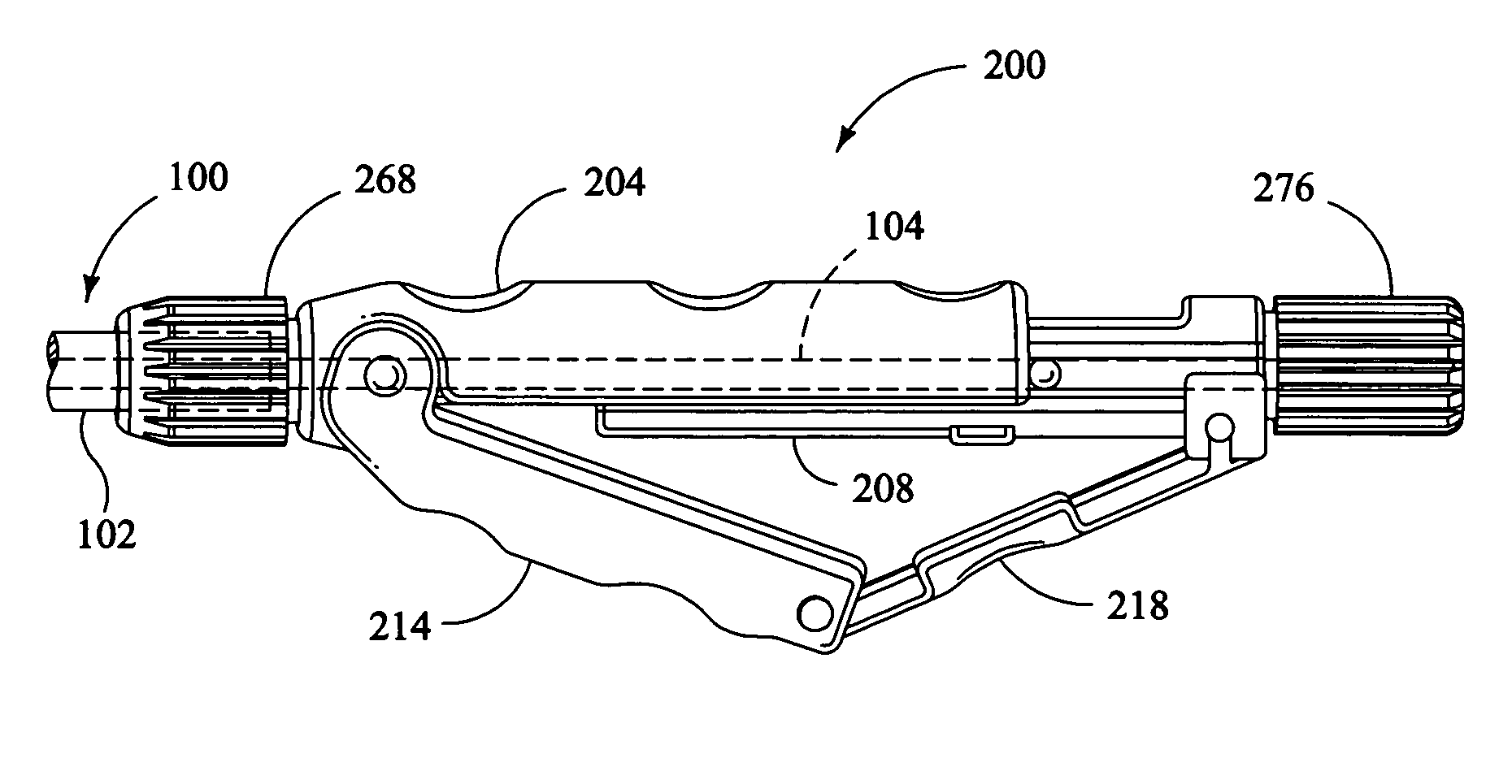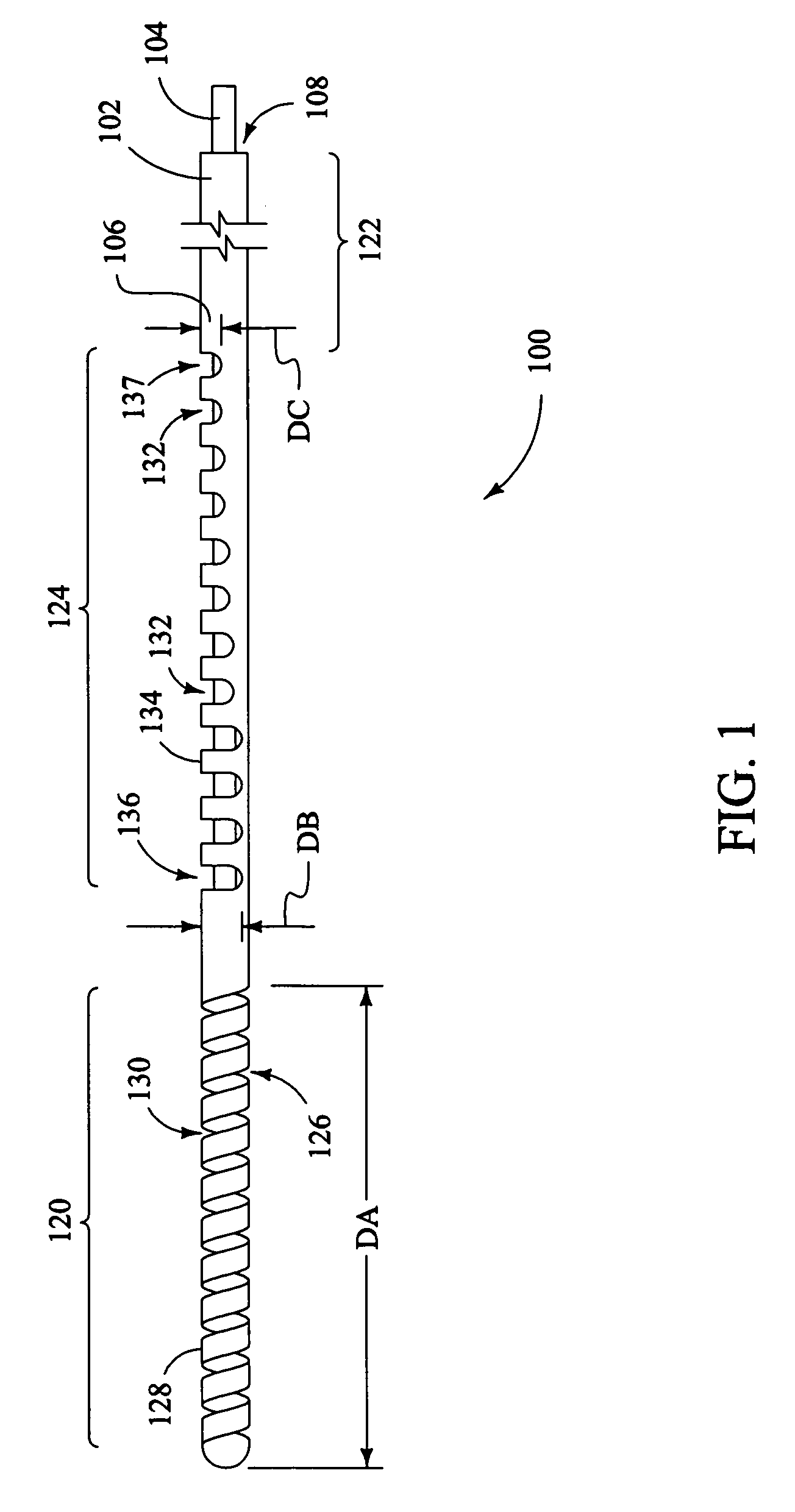Handle and articulator system and method
a technology of articulator and handle, applied in the field of system and method for navigating a medical device, can solve the problems of affecting the physiology of the patient, etc., and achieves the effects of reducing the safety of patients, and reducing the risk of injury
- Summary
- Abstract
- Description
- Claims
- Application Information
AI Technical Summary
Benefits of technology
Problems solved by technology
Method used
Image
Examples
Embodiment Construction
[0049] An assembly in accordance with some embodiments of the present invention includes a handle useful for articulating an articulator into and within various tortuous pathways (e.g., body lumens) to facilitate the performance of various minimally invasive medical procedures. Examples of body lumens include blood vessels, tear ducts, lymph vessels, lumens for the passage of bile, lumens for the passage of urine, and gastrointestinal lumens. Examples of minimally invasive medical procedures include percutaneous transluminal coronary angioplasty (PCTA), endoscopic retrograde cholangio-pancreaticography (ERCP), endovascular treatment of brain aneurysms, atherectomy procedures, biopsy procedures, stenting procedures, and diagnostic procedures (e.g., angiograms).
[0050] A handle of the present invention can be used to position and / or deliver a variety of medical devices. The medical device used in conjunction with the handle and articulator can be positioned in any suitable manner with...
PUM
 Login to View More
Login to View More Abstract
Description
Claims
Application Information
 Login to View More
Login to View More - R&D
- Intellectual Property
- Life Sciences
- Materials
- Tech Scout
- Unparalleled Data Quality
- Higher Quality Content
- 60% Fewer Hallucinations
Browse by: Latest US Patents, China's latest patents, Technical Efficacy Thesaurus, Application Domain, Technology Topic, Popular Technical Reports.
© 2025 PatSnap. All rights reserved.Legal|Privacy policy|Modern Slavery Act Transparency Statement|Sitemap|About US| Contact US: help@patsnap.com



